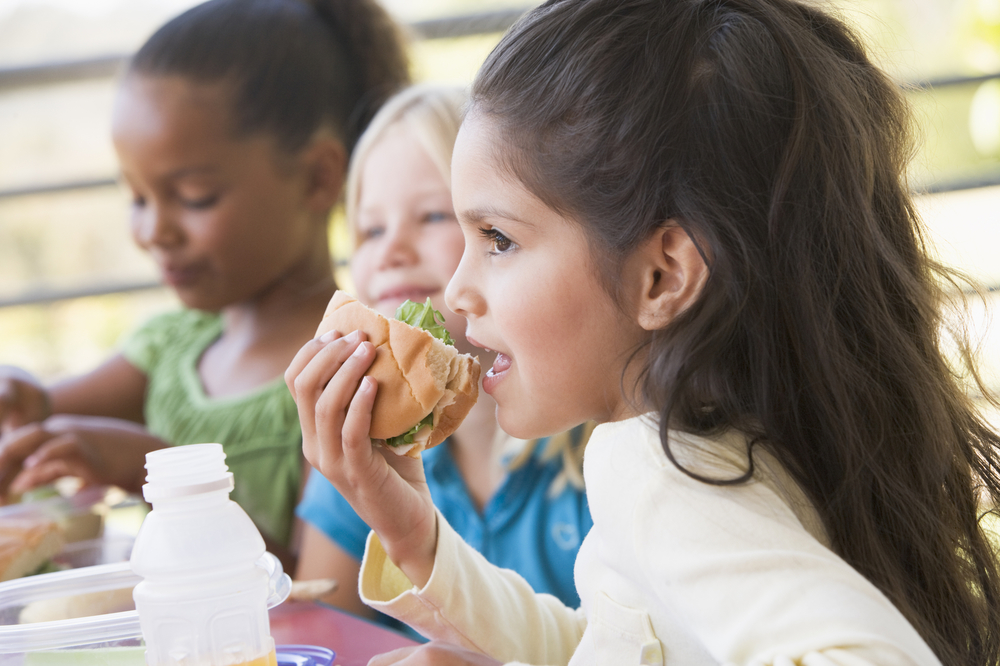5 things to make a healthy lunchbox

Packing a school lunch is important to keep your child nourished and energized throughout the long school day. Today’s children are often faced with unhealthy options as school cafeterias are filled with less than optimal choices from franchise fast food offerings to the temptations of the vending machine or the corner store across the street. Many pre-packaged lunch options are no better, often filled with fat, sugar and salt — lacking healthy fruit, vegetables and whole grains.
Packing a nutritious lunchbox is one way to help reinforce healthy eating in childhood when these habits are being formed. Creating and instilling healthy eating habits is more important than ever as child obesity rates have soared in recent years.
When it comes to packing a healthy lunchbox, balance is important. Including both protein and carbohydrates in your child’s lunch will ensure she finishes the day clear-headed and with energy to spare. Some easy tips for creating a nourishing lunchbox include:
1. Whole grain is best
Breads, buns and wraps baked with whole grains are better sources of fiber and will keep your child feeling full longer. Whole grain products also contain important nutrients such as selenium, potassium and magnesium. These days sourcing out whole grain options at your grocery stores is relatively simple and they can be found in everything from bread to crackers to tortillas. Experiment with a few brands to find which your child prefers.
2. Skip the chips
Many children feel their lunch is incomplete without a package of chips on the side. Parents are quite aware that most store-bought varieties are far from a healthy option. Baked tortilla chips or whole grain based crackers are good alternatives. You could also try baked (whole grain) pita chips, which are easy to make at home (I like this recipe by Barefoot Contessa).
3. Include fruit
Sugary snacks provide an energy boost followed by an energy nose-dive. Fruit is a great alternative as it provides sweetness along with fiber, vitamins and minerals ensuring a steady stream of energy. Bananas are a great lunchbox choice as they are convenient, a great source of potassium and come in their own carrying case. Apples, peeled oranges and grapes make great lunchbox additions as well. Sprinkling cinnamon on apples (or dipping them in nut butter) adds extra flavor and disguises the natural browning process. Pack the fruit in its own mini container or place it on the very top wrapped in a napkin for protection.
4. Cheese
Cheese is a great way to add a little fat and protein to your child’s meal. Both will promote satiety and sustained focus. String cheese is a fun snack that your child can play with. Choose these or cheese blocks over processed cheese slices or spreads. For those who have dairy intolerances (or as another alternative), home-made jerky is another kid friendly addition (try my home-made, oven-baked beef jerky recipe linked here!).
5. Be beverage savvy
Whole food options like fruit and vegetables are always better alternatives than juices. According to the American Academy of Pediatrics drinking too much juice (yes, even 100% fruit juice) can contribute to everything from cavities to childhood obesity, along with digestive discomfort, gas and bloating. Create the good habit of drinking water by freezing a bottle of water instead of the usual juice box or flavored water alternatives (which are non-carbonated soda in disguise). Try adding a few berries to the water bottle before freezing for a little added flavor. Skip soda altogether. The frozen bottle will keep the lunchbox cold and will be thawed by the time lunch is eaten.
Creating a healthy lunch for your child need not be stressful, time consuming or difficult. Focus on whole, real foods and reduce both you and your child’s reliance on premanufactured, processed products. The benefits in how your child feels at the end of the day will be well worth it!
Get all of our free recipes and meal plans here.
Sign up to receive bi-weekly updates about nutrition, health and wellness for you and your family here. As a free gift Michal will send you her eBook 10 Step Guide to Ultimate Wellness.
Previous Post
Next Post
Sleep is so important but the optimal amount is different for each family member.
It depends on age and other factors.
Find out the healthy sleep ranges by age, for you and your growing family.
Starting with babies (newborn to one year),
toddlers, preschoolers, school aged
children, teens and adults.
Guide to optimal family sleep (daytime naps & at night)
FREE download
Be the first to know about special
offers and resources
for our community only.
Don't miss out!
Become a Calm Parent Insider
FREE gifts & resources
CALMMOTHER LIMITED © 2023 | ALL RIGHTS RESERVED
terms | privacy | contact
Simplifying life for parents so you can focus on what matters most to you.
Live your best life with kids!
+ Show / Hide Comments
Share to: